Business plan for breeding and raising rabbits
Recently, the maintenance of small private farms has become increasingly popular in order to obtain additional or basic income. Before developing in this direction, you should think about the choice of the livestock industry and familiarize yourself with information about the direction of interest. Rabbit breeding is a good choice. For proper and full-fledged cultivation, you need to draw up an approximate business plan for breeding rabbits.
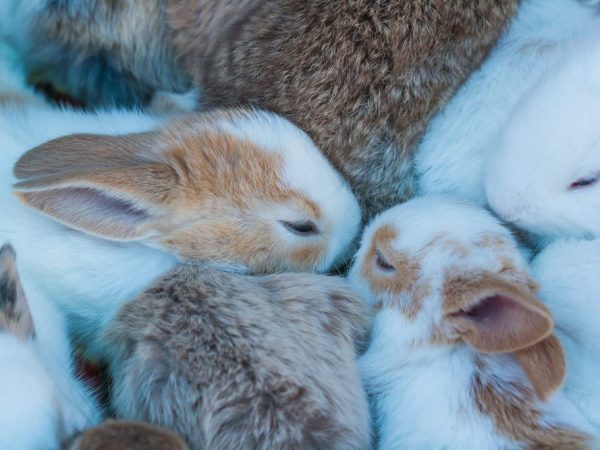
Rabbit breeding as a business
The most suitable activity for novice farmers will be raising pets in cages or burrows at home. Such a business is able to provide financially, as well as provide a family with fresh meat. However, you should first draw up a detailed business plan of activities with the calculated initial investment, as well as columns for additional profit.
It is best to do such a thing for a person who loves animals and is ready to pay attention to them, to provide care. This process must be approached responsibly, it is advisable to decide for yourself whether there is a desire to do this business in a few years. If so, you need to move on to drawing up a detailed business plan.
Building a rabbit farm
In order to start breeding rabbits, you need to decide on the place where the construction will take place. We are talking about a personal plot of land or a leased area. The first option is preferable since you don't have to pay rent. Before the direct construction of a building, the requirements for the distance between farm buildings and residential buildings should be clarified. Perhaps, if there are any buildings on the site, they can be converted into farm land.
The most favorable place for building a farm will be an area with the following characteristics:
- flat area on a hill;
- remoteness from highways and railways;
- absence of swamps and reservoirs with high humidity.

Build a rabbit farm
Additionally recommended:
- lay asphalt;
- purchase the materials necessary for the manufacture of shed designs.
The animal room can be made of galvanized mesh. When using this design for growing pets on one hundred square meters, you can place both the cages themselves and third-party premises for solving other economic problems. Moreover, each of the additional buildings can also be used to raise rabbits for a total of up to 1000 each year.
The system of sheds, made according to a two-tier technology, allows you to place in one structure up to 60 cells measuring 1.3 * 0.7 * 0.55 sq. m. For the manufacture of cages, a galvanized mesh with small cells 18 x 18 mm, 20 x 20 mm or 16 x 48 mm is used. The floor is best done at an angle; for this, the back wall of the cages should be lowered 20 cm in relation to the front one.This will help ease the cleaning process. The floor covering should be selected with a double bottom.
Keeping rabbits in pits
Keeping pets in pits is less costly, but in this case it will not be possible to breed pets to obtain valuable fur skins, since the fur will get dirty in the hole and become coarser. If you want to breed young animals to get dietary meat, it is recommended to use an earthen breeding method. With this method, animals reproduce more often, they feel better and their immunity is stronger, since rabbits in burrows are close to their natural living conditions.
When breeding eared in pits, the farmer spends less money for feeding, since the feed is poured into a common feeder.
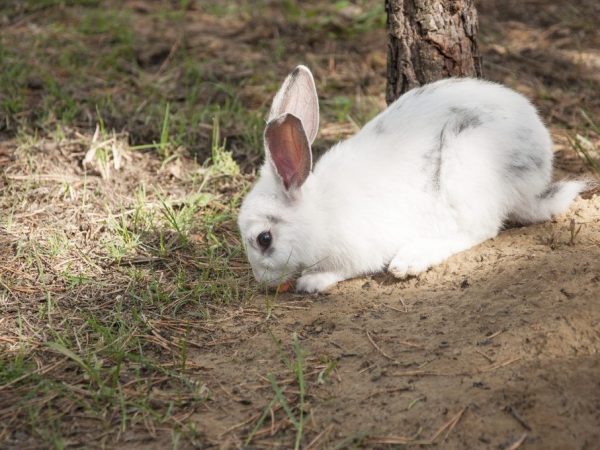
Rabbit hole
It is more convenient to clean the hole, and you will not have to do it as often as in the cages. The main disadvantage of keeping and raising rabbits in burrows is the possible spread of diseases. If at least one individual falls ill, the rest will immediately become infected. It is rather difficult to control this process.
Of the investments in pit maintenance, the farmer will only need to strengthen the walls in the main dwelling of pets, each rabbit will dig holes and holes for itself. The main condition for such maintenance is the absence of groundwater in the pit. If the soil allows, it is advisable for a novice farmer to try breeding pets in this way, since it is less costly.
Choosing a breed of rabbits
When choosing pets for growing, the most popular and meat varieties of rabbits should be noted.
- New Zealand white rabbit.
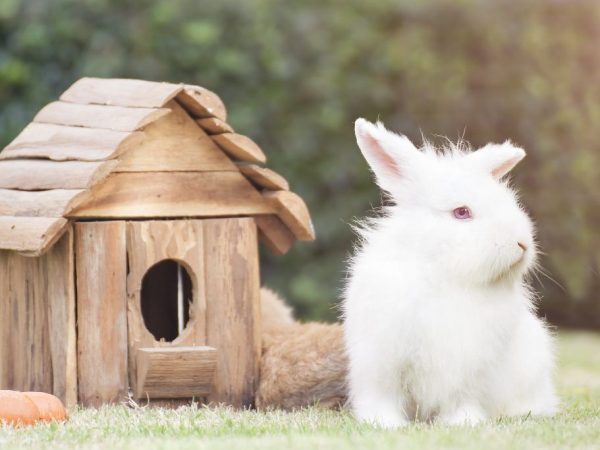
New Zealand White Rabbit
These rabbits are characterized by rapid weight gain, and at the age of 3 months their weight will be about 3.5 kg, and at 5 months the pets already weigh from 4 to 5 kg. Females of this species have a calm, benevolent character. For one birth, the rabbit brings up to 8 cubs.
- New Zealand red rabbit.
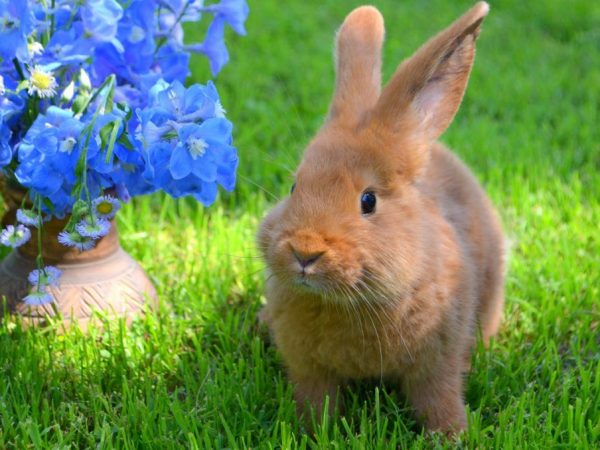
New Zealand red rabbit
This type of pet belongs to broilers. By 5 months, individuals weigh an average of 4.5 kg with a weight gain of 45 g every day. Meat and skin breeds deserve special attention, since they are more profitable from an economic point of view.
- Burgundy rabbit.
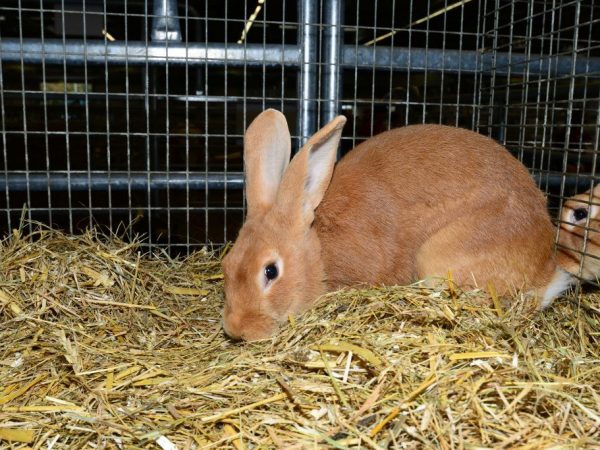
Burgundy rabbit
Representatives of this species have a red color and a muscular body, but nevertheless their skins are not very highly valued by manufacturers of fur products, since their fur is not thick enough. A more suitable direction for breeding these animals is to obtain meat: the pets are very massive. The weight of an adult male reaches 5.5 kg.
Females of this species have good fertility, one rabbit gives birth to 12 cubs. At the age of 4 months, rabbits can be bred with males for offspring.
A distinctive feature of the breed is a strong immune system. After slaughtering, up to 65% of pure meat is obtained at the exit.
- Chinchilla rabbit.

Chinchilla
This breed is the result of crossing a representative of the White Giant variety with an ordinary Chinchilla. Animals of this species not only have tasty and tender meat, but also a soft skin that belongs to a high quality class, so it is quite expensive. These rabbits have excellent adaptive abilities, so they will feel good in the Russian climate.
Males in adulthood reach a mass of up to 5 kg. Fertility of females is at an average level: in one round, the rabbit brings up to 8 cubs. Rabbits show active development and growth, which by 4 months allows them to have a weight comparable to their age. From one carcass, approximately 59% of the total weight of meat is obtained.
- German Sheep.
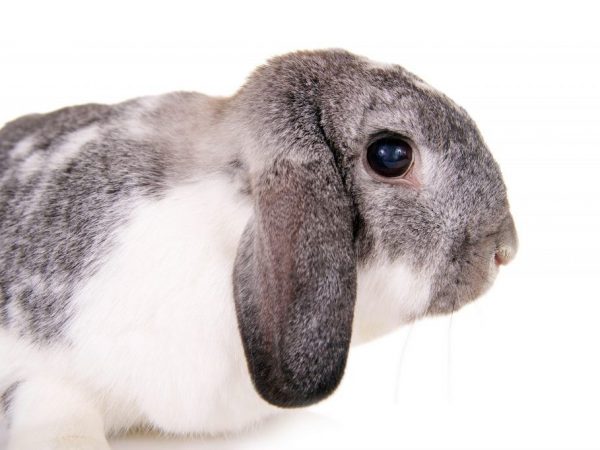
German Sheep
The birthplace of this breed of rabbits is England, where for a long time eared animals were considered decorative animals. The most striking feature of the German Sheep rabbits is its long ears. Adults reach a weight of 5.5 kg. They have good immunity, they do not need to be carefully looked after.
Fecundity of females of this breed is extremely low: from 3 to 6 pups, but rabbits are characterized by active growth. This leads to the fact that at 3 months, animals weigh 3-4 kg. You should be careful about the choice of pets for further cultivation, do not buy them in the markets. The best option is to purchase individuals in specialized stores or fairgrounds.
Male and female performance
After choosing the breed, they are determined with the male producer. For him and several females, 15 cells should be allocated, combined into one. It is desirable to organize this space on the second tier. Groups of 7-8 rabbits are placed in the remaining cells.
It is imperative to clean the cells from animal waste and dust. Rabbits are able to become pregnant immediately after giving birth, but it is more effective to allow them to visit the male 3 times a year (in spring, summer and autumn), which is what most farmers do.
On average, 6 to 8 rabbits are born into the world. They are fed by the female for up to 3 months. If you keep 15 females in a shed, then the output will be from 267 to 373 heads, and an enterprise consisting of 3 sheds will bring up to 1000 rabbit carcasses.
In the central part of the cages, between the dining area and the nest, it is necessary to place a nursery made of a 35 x 35 or 25 x 35 mm mesh and fill them with dried grass. You need to install feeders and drinkers under them.
Rabbit feeding
The main food for rabbits is a concentrated mixture - compound feed. It should be stored in a separate room with a dry microclimate. In order to save money, you can make compound feed yourself, and it will be even better and more useful than the one purchased in the store. Depending on the season, the rabbits need to be given other food as well: fresh grass and harvested hay. The diet of a female, which is waiting for the appearance of cubs, should be expanded with juicy feed and various vitamin elements.
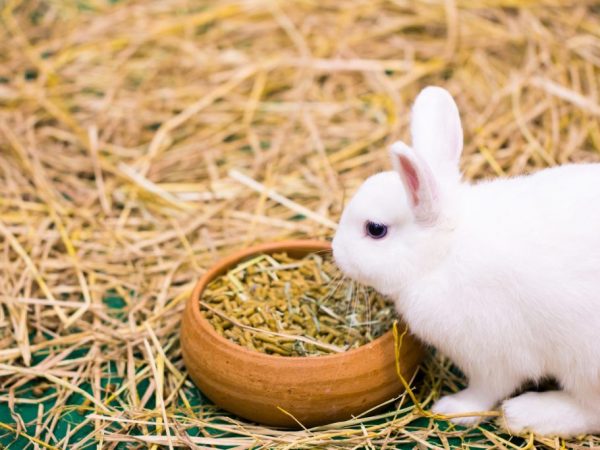
Rabbit feeding rules
In order to prepare compound feed on your own, you should purchase special equipment: a grain crusher and an extruder for granulation.
To make an inexpensive and healthy compound feed, you will need the following ingredients (dosage is indicated as a percentage):
- a mixture of ground wheat and oats - 30;
- barley with the addition of corn kernels - 45;
- cake - 12;
- crushed chalk - 0.5;
- salt - 0.5;
- bran mixture - 12.
Daily intake per adult (in grams) is:
- forbs - up to 1500;
- bean hay - 1200;
- feed from chopped twigs - 600;
- carrots - 600;
- cabbage for feed - 600;
- fodder beets - 200;
- bran - 100.
In the morning, rabbits should be given fresh grass or vegetables, and in the evening they should be fed with compound feed or cereals. Drinking water should be changed 3 times a day.
Wet mash-ups are prepared independently in order to save money.
Income
The main source of income is the sale of rabbit meat. After slaughter, an average of 2 kg comes out of an animal of pure product ready for sale. A system of 3 sheds will be able to provide up to 1000 copies, as a result, 2 tons will be obtained at a cost of 1 kg from 250 to 300 rubles. Taking into account this price range, the total income from the sale of meat will be 400-500 thousand rubles.
From here you should deduct expenses, as a result you get a net profit of 360 thousand rubles. per year or 30 per month. Separately, once a year, get 2,000 from the sale of offal. As an example, additional profit can be obtained from the sale of skins in ateliers or garment factories. These organizations buy skins for 30-40 rubles for unprocessed and up to 150 for dressed. Thus, selling 1000 skins each, it is possible to get another 150 thousand rubles.
Beginners in rabbit farming for commercial gain should have a well-thought-out business plan at hand. If you have it, you can make good money with minimal investment and high returns. Moreover, rabbit breeding is not yet so widespread, and the niche for the sale of rabbit meat is practically free, unlike chicken or pork.
Types of activity registration and required documents
In order to open a rabbit farm, you do not need to have a huge amount of money, since there is no need to purchase a large plot of land. For keeping a herd of up to 1000 heads, a standard plot of six acres is suitable.
The most important step in the process of becoming a rabbit breeder is finding the optimal activity registration. There are only two of them:
- personal type of subsidiary plots (LPH);
- the status of an individual entrepreneur (IP).
The decision to obtain one or another type of registration should be made based on the chosen method of selling the final product. Before that, you need to study a detailed plan with calculations and think about which form of enterprise to open. Mini-rabbit breeding has the most advantages through private household plots. If you want to engage in large-scale production of rabbit products, at least you need to open an individual entrepreneur.
The most suitable option for small private farms is private household plots, and when choosing it, you must prepare and submit a package of documents, consisting of the following certificates and papers:
- Certificate of ownership of the land plot. It can be obtained by contacting the local office of the cadastral Rosreestr.
- Personal health record.
- Sanitary book of a vehicle used to transport rabbits. This document must be presented only if the animals were transported in a private vehicle.
- Certificates from the doctor of the veterinary clinic on the state of animal health.
- The results of the examination from the veterinary laboratory confirming the safety of the meat.
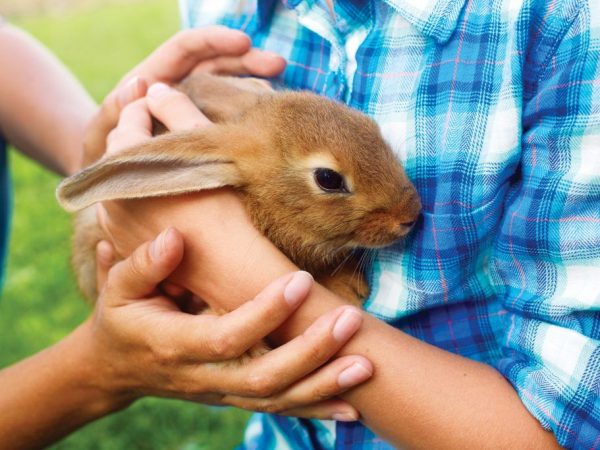
Required documents for business
To open an individual entrepreneur, for example, in the field of rabbit breeding, the following documents will be required:
- A certificate that the farm is breeding this particular type of animal.
- Certificate confirming the passage of phytosanitary control.
- Financial declaration, drawn up in accordance with the state standard.
The IP status will allow to fully promote the business plan, but at the same time it will lead to a number of not very pleasant moments, namely:
- An increase in funds spent on the organization of entrepreneurial activity.
- The need to obtain specialized permits.
- Obligatory tax payment.
In turn, private household plots are not subject to tax liabilities. Control over the activities of farmers who registered their activities in this way is carried out by the authorities of rural areas, and representatives of the Rosselkhoznadzor supervise individual entrepreneurs. After registration, a special number will be assigned, which indicates the type of economic activity, namely "breeding rabbits and fur animals in a farm". This combination also provides for an automatic ban on leather-skinning from rabbits that have been hunted by hunters. You should register your activities as private household plots only after determining with the sales market for the products.
Product markets
At home, mini-farmers must find markets for their finished products. This point is also important, since the income of the enterprise will depend on it. Relatives, acquaintances, or friends can be included in the initial customer base of a mini-farm. Then, when the production takes a serious position in the market, you can hire employees to work.
Additionally, you should be engaged in advertising: write an advertisement in newspapers or leaflets distributed on the street. It is best to sell meat on the territory of the farm itself. In addition, you can become a partner of resellers, but then they need to present a certificate from a veterinarian. Separately, you can try to sell rabbit meat to restaurants or mini-cafes.
Expenses and income
Like any other type of business, the rabbit farm has its own income and expense items. In this direction, the costs are divided into two types: one-time and fixed costs. Depending on the care and maintenance of individuals, income, like expenses, can either decrease or increase, so it is very important to approach such a business with full responsibility.If you started keeping rabbits in cages, but ran out of money to continue doing this, you can try to transfer the enterprise to earthen keeping.
One-time expenses include:
- Purchase of rabbits. On average, 45-50 heads of pedigree young animals are bought, which will cost about 13.5 thousand rubles.
- Payment for the services of representatives of Rosreestr. For individuals, the cost is 2 thousand rubles.
- Purchase of materials for the construction of sheds.
The list of fixed costs is slightly broader and includes costs for:
- visiting a veterinary clinic;
- food;
- payment of electricity bills;
- purchase of hay.
Veterinarian services for the farm will cost 300 rubles per individual, and this amount grows, depending on the chosen organization. Thus, a doctor's visit to service 3 sheds with 15 females kept in each of them will cost over 12 thousand rubles. During each year, the female gives birth to an average of 24 rabbits. With proper care, there may be more young animals.
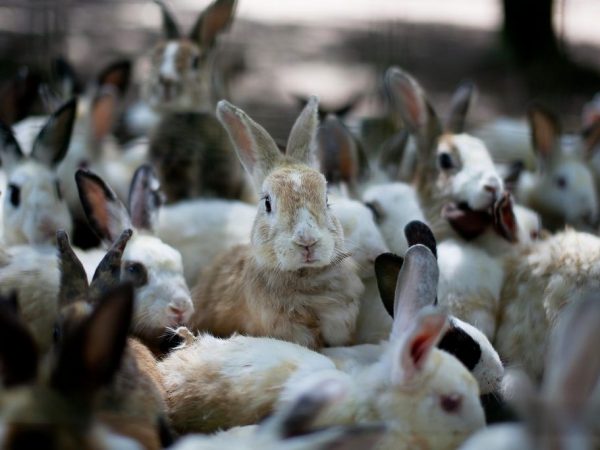
Expenses and income
When breeding rabbits in natural conditions, in pits, females give birth more often and better. Cubs are weaned from their mother at 2 months, and slaughtered at the age of 90 days. In order to ensure proper nutrition for the rabbit mini-family (1 mother and cubs), you need to prepare 340 kg of compound feed. On the market, the average price for 1 kg is 9 rubles. Thus, within a year it will take 3 thousand rubles to feed one family, and providing food for 3 sheds will cost about 126 thousand rubles.


